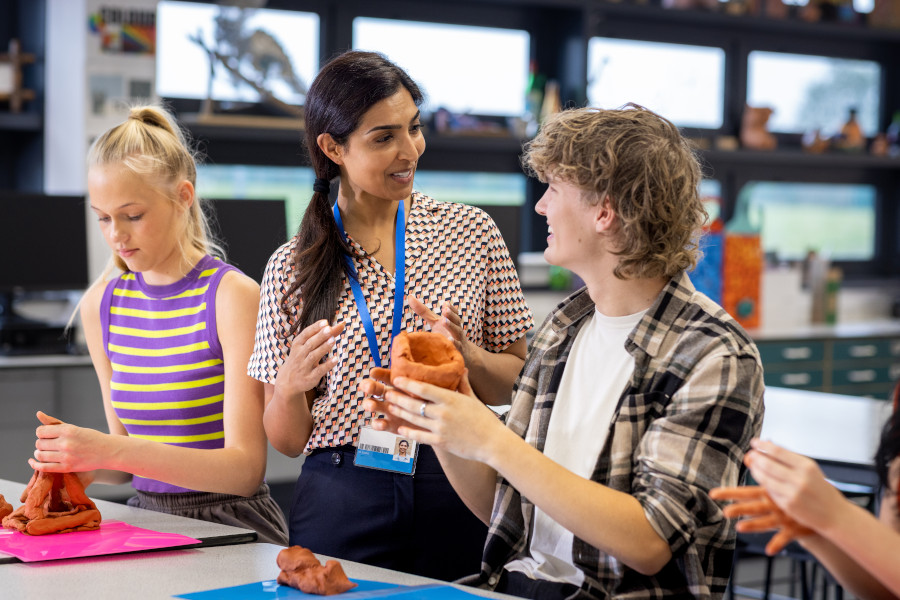
Some visual and design experts say that while creating a piece of art, artists should avoid obsessing over what the end product will look like once completed. They say that a good artist should instead focus on the process of creating art which includes the ability to recognize when changes to their original plan may be needed to produce a finished piece that accurately captures their artistic vision. Artists may need to adjust by using certain techniques, practices, or art tools that they had not previously considered. It is important for an artist to possess the flexibility and insight that allows them to reflect upon their work and enables them to build upon the principles of contemporary and traditional art as well as draw upon other resources available to them as they produce their own personalized creation. But coming into your own as an artist is not easy. It requires developing artistic agency which means having the capacity to be self-directed, self-motivated, and self-aware of one’s progress throughout the creative process.
Artistic agency grows from being engaged in the creative process.
Many studio art instructors adopt a teaching style intended to foster and nurture artistic agency in their students by getting them engaged in each stage of the artistic process. This concept is at the heart of the National Core Arts Standards for Visual Arts where high school students are expected to “formulate new creative problems,” “choose from a range of materials and methods,” and “generate plans and ideas.”
But in encouraging the growth of artistic agency in their students, studio art teachers must strike a careful balance between open-endedness—something that is inherent in the very nature of the artistic process itself—and the structure which students need to become competent in their discipline. This is especially important for teachers with students who may lack experience with artistic techniques or who may feel overwhelmed by the many choices available to them in creating art. These students may at times benefit from a more direct or “controlling” teaching approach if it is offset by the teacher providing an opportunity for them to develop autonomy over their own creative work.
Teacher support of student autonomy is critical to the development of agency over learning.
Research suggests that teacher support of student autonomy is critical to the development of student agency during learning—whether it be in art or another academic discipline. Autonomy supportive teaching styles can help students stay motivated. It can assist students in developing the skills to self-regulate and take responsibility for their own learning. In contrast, teachers who exhibit controlling behaviors in managing their classrooms might dampen a student’s motivation and make it less likely that the student will take ownership over their own learning. This can lead to poor student outcomes. As such, most teachers seek a balance of the two approaches.
Study findings show that balancing support of student autonomy with a more direct pedagogical approach can build student agency.
The results of a recent study showed pedagogical methods that are considered supportive of student autonomy. These included: 1) taking the perspective of the student; 2) supporting students’ intrinsic motivation; 3) giving an explanatory rationale for any decision or direction impacting the student; 4) offering suggestions rather than making commands; 5) acknowledging the difficulty of the project the student was working on and showing empathy in response to the student’s frustrations with the task; and, 6) accommodating the student’s pace of work by offering flexible project deadlines.
This study also found that the teachers sometimes used language considered to be controlling, but that this accounted for only 25% of the student-teacher interactions. A few of these exchanges involved classroom management issues where the teacher told the students they were making too much noise and instructed them to be quiet. However, most of the interactions consisted of commands or directives such as telling a student what tool or material they should use in their art project or what technique they should utilize to attain a desired artistic effect. These directives occurred early in the school year. As students gained more experience throughout the year, the teachers adopted a more flexible approach and encouraged them to exercise their own agency in choice of tools and materials as well as in the many other aspects of creating a personalized body of art reflective of the students’ ideas and artistic vision.
These results illustrate how teachers can shift between an autonomy supportive style and a more controlling, directive-oriented approach in helping students build agency over their learning.
To learn more about student agency in the visual arts, read this article by Kimberly M. Sheridan, associate professor in the Educational Psychology program within George Mason University’s School of Education. For more information about degree offerings in Mason’s Educational Psychology program, please visit the program website.
